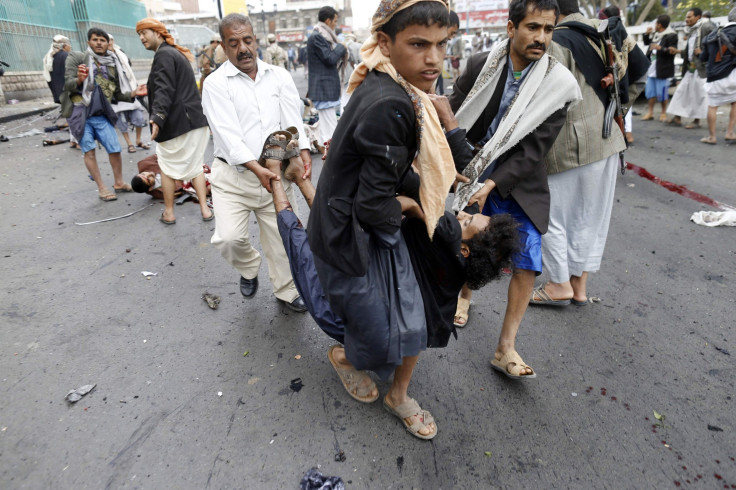How The U.S. Drone Campaign Against Al Qaeda In Yemen Is Tied To The Fight Against ISIS

The U.S. drone campaign in Yemen, which has been targeting al Qaeda operatives in the country since 2002, is now helping in the fight against the Islamic State group in Syria and Iraq. Al Qaeda in the Arabian Peninsula, or AQAP, long active in Yemen, pledged allegiance to the Sunni militant group in August and has since been helping train its fighters, according to Yemeni officials, but the U.S. drone strikes are helping to stop that support.
President Obama has said that the mission is to “degrade and ultimately destroy” the group also known as ISIS. Part of that fight would include ensuring that ISIS does not expand beyond its current strongholds in Syria and Iraq, senior U.S. politicians have said. The U.S. stepped up its efforts against AQAP in Yemen as ISIS began to gain ground in Syria and Iraq. In April 2014, the U.S. began a massive and unprecedented assault against al Qaeda fighters in Yemen that killed dozens of the group's members.
Between 2002 and 2014, the U.S. conducted more than 66 drone strikes in Yemen, killing about 350 people, including at least 64 civilians. The latest strike in the Bejan district of Shabwa province in September killed at least 10 operatives. Still, despite the increase in drone strikes in recent months, AQAP is on the offensive in the capital Sanaa, within a confrontation that mirrors the larger Sunni/Shia divide in the Muslim world.
On Thursday more than 45 people were killed in Sanaa when a suicide bomb attack hit supporters of the Houthis, a Shiite minority rebel militia that captured Sanaa on Sept. 21. Yemeni officials said the attack, the deadliest since 2012, was launched by Sunni jihadists, most likely affiliated with AQAP, who are unhappy with the Houthis gaining political power.
Following the takeover of Sanaa, the Houthis signed a power-sharing deal, angering Sunnis and causing the increase of attacks in the capital. The violence intensified with Thursday's attack on a march by Houthis to protest the nomination of a new prime minister by President Abed Rabbo Mansour Hadi. Houthi leaders said the group was not consulted by the government and did not agree to the new prime minister.
U.S. involvement in Yemen may in fact be escalating those sectarian tensions, which could have consequences that expand beyond the borders of Yemen and end up escalating the fight in Syria. AQAP, a Sunni-affiliated militant organization, has ties to the Islamic State; on the other side, the Houthi Shiites are said to receive funding and training from Iran, a close ally of Syrian President Bashar Assad.
In August, AQAP declared its support for the Islamic State group.
“We announce solidarity with our Muslim brothers in Iraq against the crusade. Their blood and injuries are ours and we will surely support them,” said a statement published by AQAP, the Yemen Times reported. “We assert to the Islamic Nation [all Muslims worldwide] that we stand by the side of our Muslim brothers in Iraq against the American and Iranian conspiracy and their agents of the apostate Gulf rulers.” AQAP’s support for ISIS is at odds with the top leaders of the al Qaeda network, who denounced their former affiliate and declared their support for Jabhat al-Nusra, another Sunni militant group fighting in Syria.
On the Shiite side, a member of the Iranian parliament, Ali Reza Zakani, said last month that Sanaa would become part of the Iranian revolution. Zakani told the Iranian Rasa News Agency that 14 out of 20 Yemeni provinces would be taken over by Houthis, who then could expand to other countries such as Saudi Arabia.
© Copyright IBTimes 2024. All rights reserved.





















